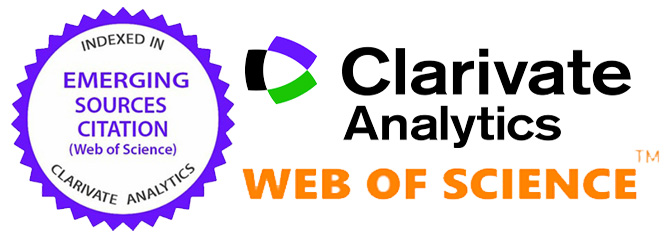Experimentation of Problem Posing Learning Model Assisted of Autograph Software to Students’ Mathematical Communication Ability in Terms of Student’s Gender
Abstract
The study aimed at finding out in dept about the interaction between Problem Posing model assisted with Autograph Software with the student’s gender to students' mathematical communication ability. This study used quantitative research with quasi experimental method. The approach used was a scientific one. The population of this study were all the Class X students of MAN Kisaran. The sample in this study were the students of class X-IPA1 and X-IPA-2 in MAN Kisaran of Asahan Regency. This study was conducted in the even semester of the academic year 2017/2018. Data analysis was done by 2-way ANOVA test. Based on the statistical calculation, it can be concluded that the value of Fcount<Ftable is 0.778 <3.12. This shows that Fcount<Ftable(0.778 <3.12) is not significant so that it can be concluded that H0 is accepted and Ha is rejected which means there is no interaction between learning with students’ gender. The finding of students’ actitivity aspects is based on direct observation. Female students are more active in learning but are weaker in reasoning, meanwhile Male ones are quick in reasoning but are less active in learning.
References
Akay, Hayri. et. all. (2010).The Effect of Problem Posing Oriented Analyses-II Course on the Attitudes toward Mathematics and Mathematics Self-Efficacy of Elementary Prospective Mathematics Teachers. Australian Journal of Teacher Education. Vol. 35, 1, February 2010.
Brenner, M. E. (1998). Development of Mathematical Communication in Problem Solving Groups By Language Minority Students. Bilingual Research Journal. Volume 22 Number 2, p. 3-4.
Brown, S., & Walter, M. I. (1990). The Art of Problem Posing. Philadelphia, PA: Franklin Institute Press.
Butler, Douglas., (2007), Autograph, for The Dinamic Classroom (Autograph in Action),www.autograph-math.com (Accessed at March of 2017)
Casey, dkk (2001). Spatial Mechanical Reasoning Skills Versus Math Self-Confidence S Mediators Of Gender Differences On Math Substest Usung Cros Natural Gender-Based Item.Journal For Research in Math Education.
Firman.dkk (2013). Pengaruh Persepsi Matematika Terhadap Hasil Belajar Matematika Ditinjau Dari Perspektif Gender Siswa Kelas V SD Negeri di Kecamatan Pasongsongan Kabupaten Sumenep. Jurnal Universitas Wiraraja.
Fonna, M., & Mursalin, M. (2018). Role of Self-Efficacy Toward Students’ Achievement in Mathematical Multiple Representation Ability (MMRA). Jurnal Ilmiah Peuradeun, 6(1), 31-40.
NCTM - National Council of Teachers of Mathematics (2000). Principles and standards for school mathematics. Reston, VA: NCTM.
Silver, E. A. & Cai, J. (1996). An Analysis Of Arithmetic Problem Posing By Middle School Students. Journal For Research in Mathematics Education, Vol. 27(5), p. 521-539.
Vitoria, L., & Monawati, M. (2016). Improving Students’ Problem Solving Skill in Mathematics Through Writing. Jurnal Ilmiah Peuradeun, 4(2), 231-238.

This work is licensed under a Creative Commons Attribution-ShareAlike 4.0 International License.
Authors who publish with this journal agree to the following terms: (1) Authors retain copyright and grant the journal right of first publication with the work simultaneously licensed under a Creative Commons Attribution-ShareAlike 4.0 International License (CC-BY-SA) that allows others to share the work with an acknowledgment of the work's authorship and initial publication in this journal; (2) Authors are able to enter into separate, additional contractual arrangements for the non-exclusive distribution of the journal's published version of the work (e.g., post it to an institutional repository or publish it in a book), with an acknowledgment of its initial publication in this journal; (3) Authors are permitted and encouraged to post their work online (e.g., in institutional repositories or on their website) prior to and during the submission process, as it can lead to productive exchanges, as well as earlier and greater citation of published work (See The Effect of Open Access).

























